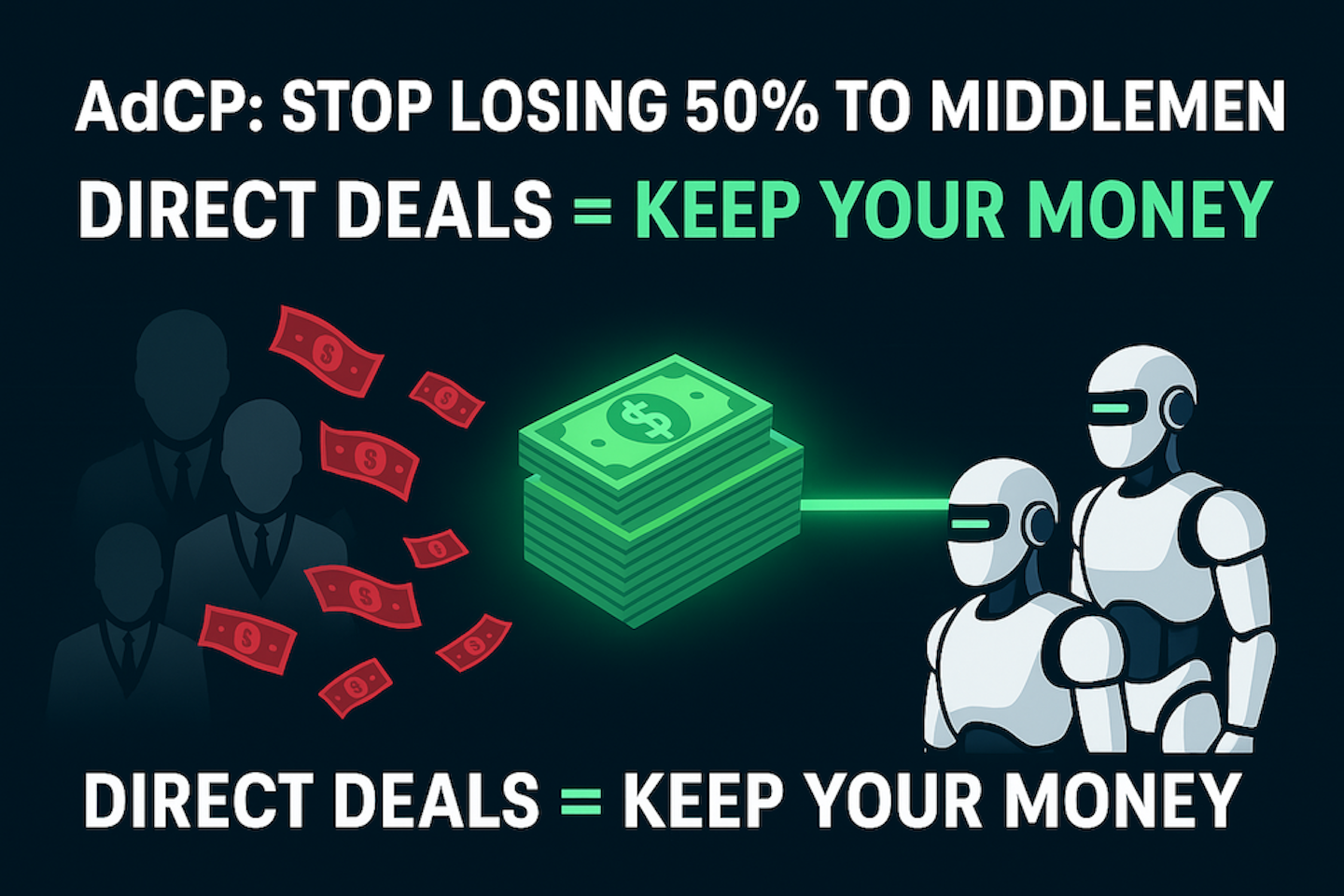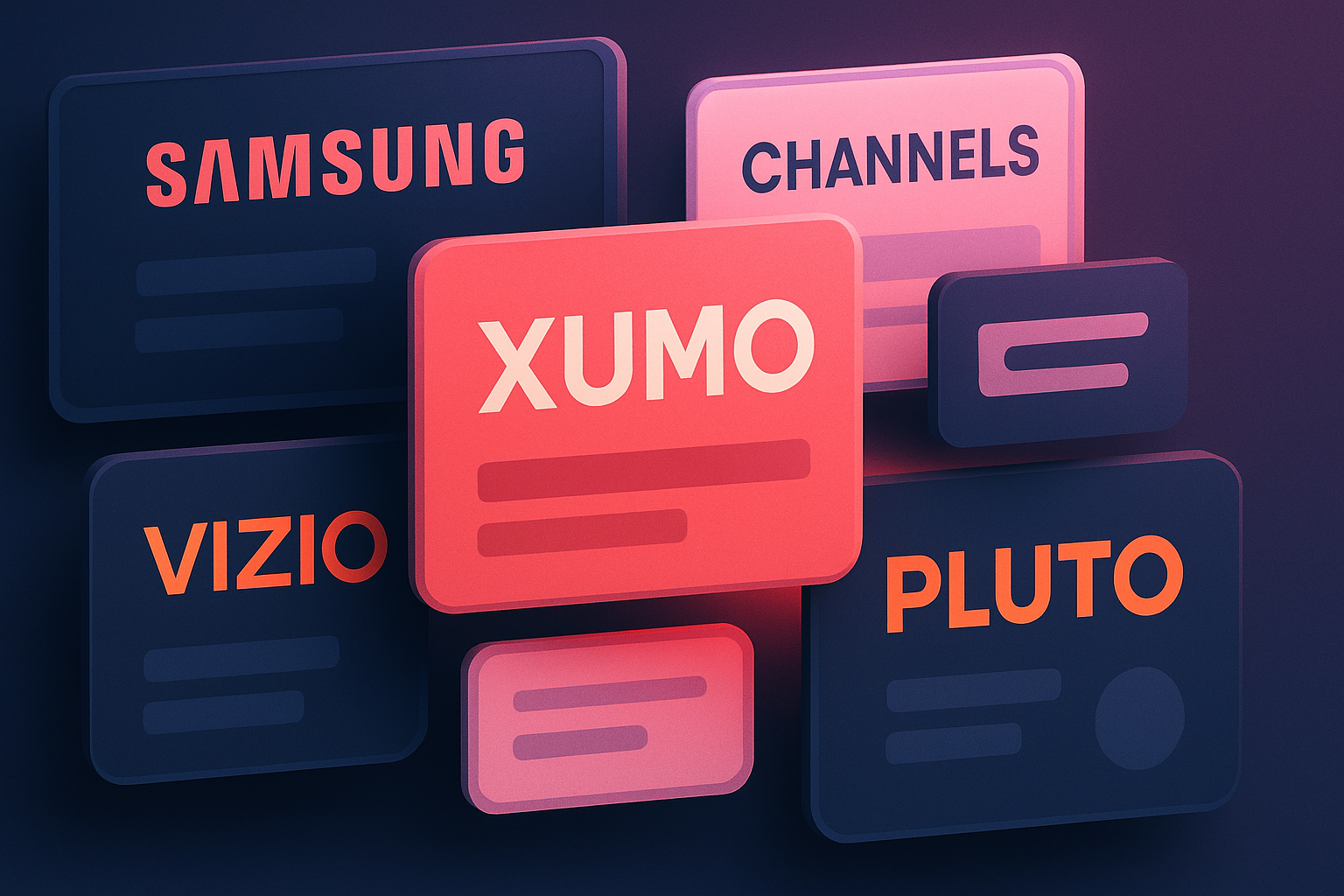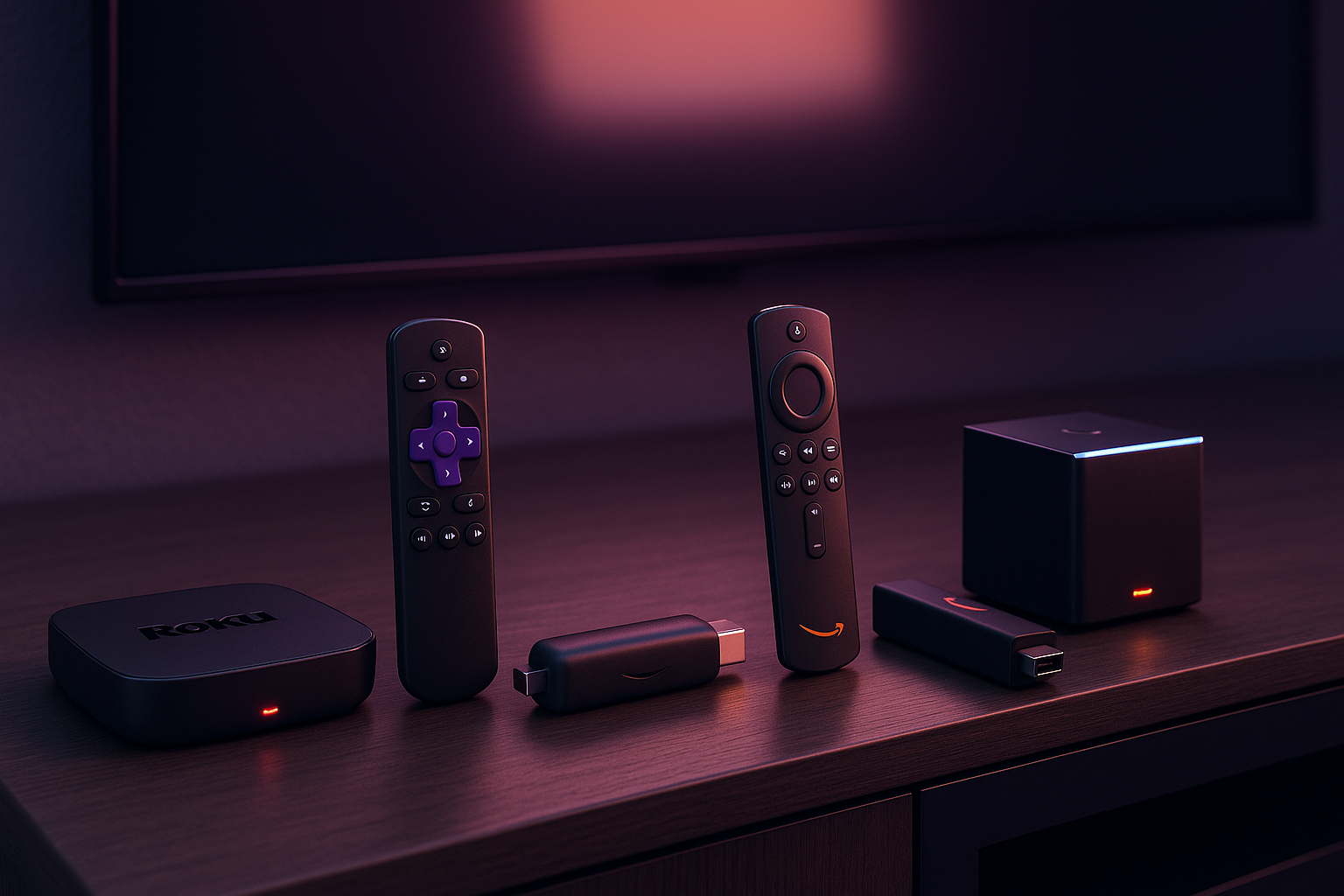Programmatic vs. Direct Sales: The Real Numbers Behind FAST Channel Ad Revenue
One of the biggest questions facing FAST channel operators is also one of the most consequential: should you focus on programmatic advertising, direct sales to advertisers, or some combination of both? The answer affects everything from your day-to-day operations to your revenue potential, yet most publishers make this decision based on incomplete information or vendor promises rather than real data.
Let’s cut through the noise and talk about what actually works, what the numbers really look like, and how to make the right choice for your specific situation.
Understanding the Two Models
Before diving into revenue comparisons, it helps to understand what we’re actually comparing. Programmatic advertising means your ad inventory gets sold automatically through real-time bidding platforms and exchanges. Advertisers bid on your impressions in milliseconds, and the highest bidder’s ad gets shown. You connect to demand through SSPs (supply-side platforms) and ad exchanges, and the whole process happens without human intervention.
Direct sales means you or your sales team negotiate deals directly with advertisers or their agencies. You agree on pricing, volume, targeting parameters, and creative specifications. Then you traffic those campaigns manually through your ad server. It’s relationship-driven, labor-intensive, and requires ongoing management.
Most successful FAST channels use a hybrid approach, but the ratio between programmatic and direct varies dramatically based on channel size, content vertical, and audience characteristics. Understanding why that ratio matters starts with understanding the revenue reality of each approach.
The Revenue Reality: What the Numbers Actually Show
According to The Trade Desk’s CTV advertising insights (https://www.thetradedesk.com/us/products/channels/ctv), programmatic CTV ad spend has grown substantially, with CPMs ranging widely based on content quality and audience targeting capabilities. However, the reality for individual publishers is more nuanced than industry-wide growth numbers suggest.
For programmatic inventory, most FAST channels see eCPMs between five and fifteen dollars for broad, untargeted inventory. If you have strong first-party data and can offer precise audience targeting, those numbers can climb to twenty to thirty dollars or higher. But here’s the catch: the average fill rate for programmatic-only channels typically sits between seventy and eighty-five percent, according to data from major SSPs and ad tech providers tracked by AdExchanger (https://www.adexchanger.com/).
Direct sales can command higher CPMs—often twenty to fifty dollars or more for premium placements with guaranteed delivery. Advertisers pay more because they’re getting exactly what they want: specific dayparts, guaranteed impressions, detailed reporting, and often custom integrations or sponsorships. The problem is volume. Unless you have a dedicated sales team and strong advertiser relationships, you probably can’t sell out your entire inventory through direct deals. Many channels only fill thirty to fifty percent of their available inventory through direct sales.
The math gets interesting when you factor in the costs. Programmatic is largely automated, so your marginal cost per impression is low—mainly just the technology fees and revenue share with your SSP partners, typically fifteen to thirty percent of gross revenue. Direct sales requires salespeople, account managers, trafficking specialists, and often custom creative work. Those costs can eat up forty to sixty percent of your gross revenue depending on deal complexity and team efficiency.
The Hidden Costs Everyone Forgets
Beyond the obvious revenue splits and personnel costs, both approaches carry hidden expenses that affect your bottom line differently. Programmatic seems cheap because it’s automated, but you’re paying in other ways. Poor fill rates mean you’re either running house ads or dead air, both of which hurt viewer experience and can impact retention. According to IAB programmatic guidelines (https://www.iab.com/insights/programmatic-advertising-primer/), the technology stack required for effective programmatic monetisation—header bidding, SSP connections, real-time decisioning—adds complexity and potential points of failure.
Low-quality programmatic demand can also damage your brand. If your channel is showing sketchy ads for dubious products, viewers notice. Brand safety tools and premium marketplace access help, but they add cost and reduce fill rates further. You’re constantly balancing maximum revenue against maintaining a quality viewer experience.
Direct sales costs are more visible but also more controllable. Yes, you need people to sell and manage campaigns, but you have complete control over what ads run on your channel. You can build relationships with brand advertisers who align with your content and audience. The reporting and insights you gather from direct campaigns also help you understand your audience better, which makes your programmatic inventory more valuable over time.
There’s also a timing consideration that affects cash flow. Programmatic typically pays on a net-sixty or net-ninety basis, sometimes longer. Direct deals often involve similar or even longer payment terms, but you can sometimes negotiate better terms with smaller advertisers who value the exposure. Understanding your cash flow needs matters when choosing between models.
When Programmatic Makes Sense
Programmatic shines in specific scenarios. If you’re a smaller channel just starting out, programmatic gives you immediate monetisation without needing a sales team. You can launch your channel, connect to a few SSPs, and start generating revenue within days. The revenue won’t be spectacular, but it’s real money with minimal operational overhead.
Programmatic also works well for inventory that’s hard to sell directly. Late night hours, overflow inventory, and impressions that don’t fit neatly into direct deal specifications can all be monetized programmatically. Rather than running house ads or leaving money on the table, programmatic fills those gaps automatically.
Channels with highly targetable audiences benefit enormously from programmatic. If you have strong demographic data, viewing behavior insights, or content that appeals to valuable advertiser segments, programmatic buyers will pay premium rates for access. A financial news channel with verified high-income viewers can command much higher programmatic CPMs than a general entertainment channel with the same traffic volume.
Scale matters too. Once you’re delivering tens of millions of impressions monthly, programmatic efficiency really pays off. The percentage-based fees become worthwhile when the absolute numbers are large. A fifteen percent SSP fee on ten million dollars in revenue is certainly significant, but it’s supporting an automated system that would require a massive sales organisation to replicate through direct sales.
When Direct Sales Wins
Direct sales becomes attractive once you have a differentiated offering that advertisers can’t easily get elsewhere. Niche content verticals—classic TV, horror, true crime, specific sports—attract passionate audiences that brands want to reach. If you can articulate your audience value proposition and have the reach to matter to advertisers, direct sales will almost always generate higher revenue per impression than programmatic.
Premium inventory deserves direct sales treatment. Your highest-trafficked dayparts, most engaging content blocks, and best viewer demographics should be reserved for direct deals when possible. Advertisers will pay significant premiums for these placements, often two to three times programmatic rates, because they know they’re getting your best inventory with guaranteed delivery.
Sponsorships and integrations are purely direct sale opportunities. A brand that wants to sponsor a specific show, create custom content, or integrate into your programming in unique ways will pay well above standard ad rates. These deals also tend to be longer-term commitments, providing revenue stability that programmatic can’t match.
Local and regional advertisers often prefer direct relationships. If your content has geographic relevance or your distribution includes specific metro areas, local businesses might want to advertise but don’t participate in programmatic marketplaces. Direct outreach to these advertisers can uncover revenue opportunities that programmatic would never capture.
The Hybrid Approach That Actually Works
The most successful FAST channels use a strategic hybrid model that maximizes the benefits of both approaches. The typical structure looks something like this: reserve your premium inventory—say the top twenty to thirty percent based on viewership and engagement—for direct sales opportunities. Price this inventory aggressively and be selective about what runs there. This is your brand-building, relationship-nurturing, premium-revenue inventory.
Push the next tier of inventory through programmatic with strong floor prices. This is good-quality inventory that can command decent programmatic rates, but isn’t quite premium enough to sell directly or doesn’t fit current direct campaign needs. Use header bidding and multiple SSP connections to maximize competition and fill rates. According to programmatic best practices tracked by AdExchanger (https://www.adexchanger.com/), channels using header bidding typically see eCPM improvements of fifteen to thirty percent compared to waterfall setups.
Your long-tail inventory—less popular dayparts, lower-engagement content blocks, remnant impressions—goes entirely programmatic with floor prices set to maximize fill rate while maintaining minimum revenue standards. This is volume inventory where automation makes sense and direct sales would never be cost-effective.
Build your direct sales pipeline gradually. Start with your own network, reaching out to brands that align with your content. As you prove your value and build case studies, expand to agencies and larger brands. Don’t try to build a massive sales team overnight. One good salesperson focused on your niche can often outperform a large team selling generic inventory.
Use your programmatic data to inform direct sales. The audience insights, engagement patterns, and performance metrics you gather from programmatic campaigns are gold for direct sales conversations. You can show potential advertisers exactly who watches your channel, when they watch, how long they stay, and what drives engagement. This data-driven approach makes direct sales much more effective.
Making the Math Work for Your Channel
Let’s talk specific scenarios with real numbers to make this concrete. Imagine you’re running a FAST channel delivering ten million impressions monthly. If you go fully programmatic with an average eCPM of ten dollars and an eighty percent fill rate, you’re generating eighty thousand dollars in gross revenue. After SSP fees of twenty percent, you net sixty-four thousand dollars.
Now imagine a hybrid approach. You sell two million impressions directly at a thirty dollar CPM, generating sixty thousand dollars gross. After forty percent costs for sales and operations, you net thirty-six thousand dollars from direct. Your remaining eight million impressions go programmatic at eight dollars eCPM with eighty-five percent fill rate, generating fifty-four thousand four hundred dollars gross. After SSP fees, that’s forty-three thousand five hundred twenty dollars net. Combined, you’re netting seventy-nine thousand five hundred twenty dollars—nearly twenty-five percent more than programmatic alone.
The gap widens as you scale. At fifty million impressions monthly, the difference between programmatic-only and strategic hybrid approaches can be hundreds of thousands of dollars per year. The key is finding the right balance for your specific inventory, audience, and operational capacity.
Technology and Tools That Make This Possible
Managing a hybrid monetisation strategy requires the right technology stack. Your ad server needs to support both programmatic and direct campaigns with sophisticated yield management. Google Ad Manager (https://admanager.google.com/home/) is the industry standard for larger publishers, offering robust support for both direct and programmatic with advanced targeting and reporting capabilities.
Server-side ad insertion technology is essential for FAST channels regardless of monetisation strategy. Solutions from providers like FreeWheel (https://www.freewheel.com/) ensure seamless ad experiences whether ads come from programmatic exchanges or direct campaigns. The viewer experience should be identical regardless of the source.
Header bidding wrappers and prebid implementations help maximize programmatic revenue by creating competition among demand sources. Prebid.org (https://prebid.org/) provides open-source tools that level the playing field, allowing smaller publishers to access the same optimisation techniques that large media companies use.
Analytics and attribution tools help you understand which monetisation approaches work best for different inventory types. Platforms like Conviva provide detailed insights into viewer behavior, ad performance, and quality of experience that inform smarter monetisation decisions.
Common Mistakes to Avoid
The biggest mistake is underpricing direct inventory to fill it quickly. If you’re selling direct at rates comparable to programmatic, you’re leaving money on the table and training advertisers to expect low prices. Price direct inventory appropriately—it should command a meaningful premium over programmatic rates because you’re offering value that programmatic can’t match.
Another common error is neglecting programmatic optimisation. Just because it’s automated doesn’t mean you can ignore it. Monitor your floor prices, test different SSP configurations, ensure your targeting data is accurate, and watch for fill rate and eCPM trends. Programmatic revenue can often be improved twenty to thirty percent through active optimisation.
Don’t sacrifice viewer experience for short-term revenue. Running too many ads, accepting low-quality demand, or creating jarring ad experiences will hurt retention and long-term value. According to viewer experience data from Conviva (https://www.conviva.com/research/), even small increases in buffering or ad-related issues can significantly impact engagement and session duration.
Avoid over-complicating your sales process. Some channels create so many inventory tiers, packages, and custom options that buying becomes confusing and sales cycles stretch out. Keep it simple, especially when starting out. A few clear, compelling packages will sell better than dozens of complicated options.
The Long-Term Strategy
Think about monetisation as an evolution, not a one-time decision. Most successful FAST channels start heavily programmatic because it’s accessible and low-overhead. As they grow, they gradually introduce direct sales for premium inventory and high-value advertiser relationships. The programmatic foundation provides stable baseline revenue while direct sales opportunities add upside.
Your content strategy should inform your monetisation approach. If you’re building content that appeals to valuable niche audiences, prioritize developing direct sales capabilities early. If you’re aggregating broad-appeal content at scale, lean more heavily on programmatic but ensure you’re connected to premium demand sources.
Relationships matter more than technology. The best SSP partnerships come from regular communication and collaboration, not just signing a contract and hoping for the best. Similarly, direct sales success comes from understanding advertiser needs and delivering value beyond just impressions. Invest time in building these relationships because they compound over time.
What This Means for Your Channel
The programmatic versus direct sales question isn’t binary. It’s about understanding your inventory, audience, and operational capacity, then building a monetisation strategy that maximizes revenue while remaining sustainable. For most FAST channels, that means a thoughtful hybrid approach that evolves as the channel grows.
Start with programmatic to establish baseline revenue and gather data. As you understand your audience better and prove your value, introduce direct sales for premium inventory. Use the insights from both approaches to continuously optimise and improve. The channels that execute this strategy well consistently outperform those that commit entirely to one approach or the other.
The streaming advertising landscape keeps evolving, but these fundamentals remain constant. Advertisers pay more for inventory they trust, audiences they understand, and flexibility they value. Whether that comes through programmatic or direct channels depends on your specific circumstances. The key is making informed decisions based on real data rather than vendor promises or conventional wisdom.
Your revenue optimisation starts with understanding these trade-offs and building a strategy that works for your unique situation. Track your results, test different approaches, and adjust based on what actually performs rather than what theoretically should work. The numbers don’t lie—use them to guide your monetisation decisions and you’ll build a more sustainable, profitable FAST channel.




Related news
View all


